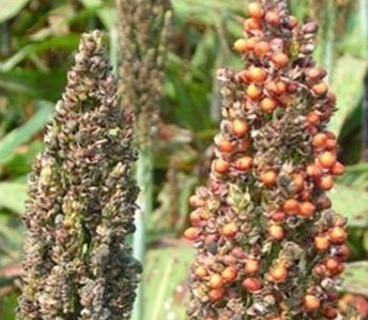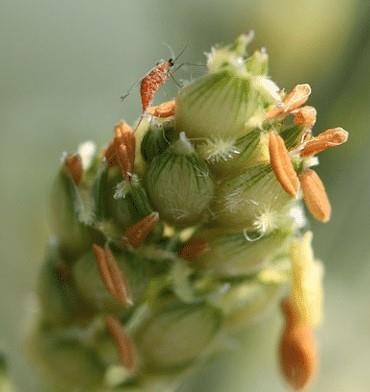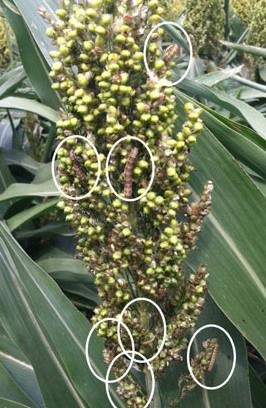
Figure 1. Damage to sorghum heads by sorghum midge feeding activity. Photo credit: K-State Research and Extension.

Figure 2. Close-up photo of a sorghum midge. Photo credit: K-State Research and Extension.
Sorghum headworms
Headworms are another possible concern as sorghum begins to mature (Figure 3). Older, 'generic' insecticides are often selected for headworm control given their lower cost, but these are becoming less effective against both fall armyworm, Spodoptera frugiperda, and corn earworm, Helicoverpa zea, as the insects have been exposed to these modes of action for many years on many different crops. In addition, resistance to the Bt traits expressed in corn ears appears to be widespread in H. zea, which means we might expect increased numbers of migrant moths arriving from the south. There are now cost-effective alternatives to synthetic insecticides for control of these pests, sold commercially under the names Heligen® and Fawligen®. These products are biological pesticides, formulations of virus diseases specific to each of these insects that will not harm beneficial species, or indeed any other insects. They are more of a prevention than a cure, but if applied in early stages of an infestation, a single treatment can be very effective. Please refer to the current Kansas Sorghum Insect Pest Management Guide for more on these and other treatment options.

Figure 3. Headworms on a grain sorghum head. Photo credit: K-State Research and Extension.
Sorghum aphids
The sugarcane aphid has recently been reported from some fields in Oklahoma, but populations remain isolated and small. We should now refer to this pest as the 'sorghum aphid', as its scientific name has been changed to Melanaphis sorghi, and it is not the same species that infests sugarcane. We do not expect economically significant infestations of sorghum aphid in Kansas to ever become as widespread as they were 5 or 6 years ago, but it is still a good idea to scout any late-planted fields that will be most at risk, in case we receive any large flights of winged aphids later in the summer.
We have also been seeing late flights of corn leaf aphid in recent years, which are not usually a concern, but might exacerbate any developing infestations of greenbugs or sorghum aphids if they colonize flag leaves and co-infest heads during grain fill. Transform and Sivanto remain the materials of choice if any threshold populations are detected. There is now a smart-phone app developed by OSU Extension that streamlines the sampling procedure for this pest considerably.
Source : ksu.edu